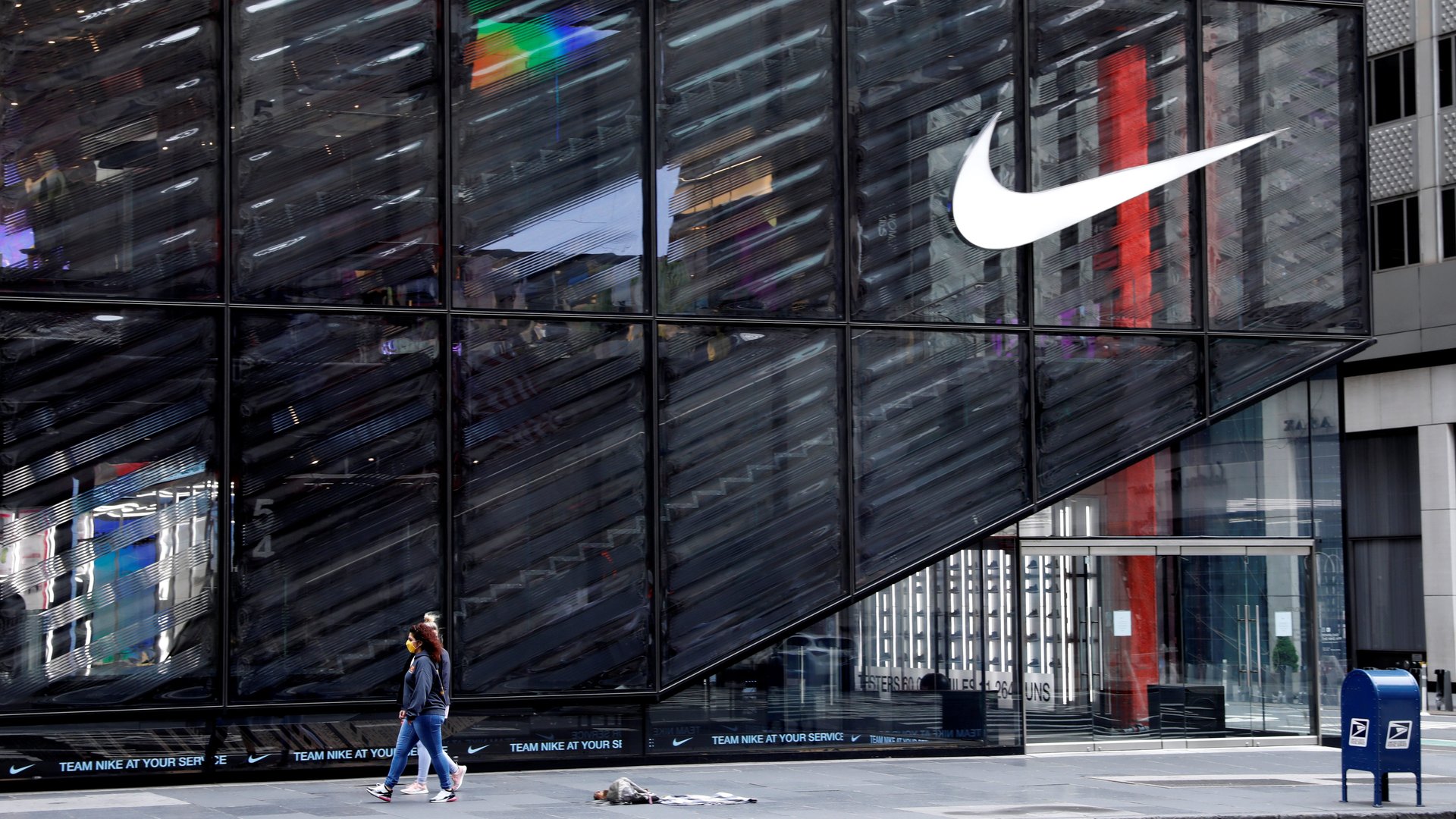Even a retail powerhouse like Nike was no match for Covid-19
When Nike kicked off its 2020 fiscal year last June, this is not the outcome it was expecting.


When Nike kicked off its 2020 fiscal year last June, this is not the outcome it was expecting.
Through the first half of the fiscal year that ended May 31, business had been humming. Sales were up 9%, according to the company. But when the pandemic hit in the second half, the impact was too great for even Nike to withstand. For the full year, Nike’s sales fell 4% versus the same period last year “due to the impact of COVID-19 on business operations, primarily in the fourth quarter,” the company said yesterday (pdf).
The results were more bad news for the US retail sector, where Nike is one of the stronger performers and arguably better insulated from the pandemic than many others. The company has been doing more of its sales straight to shoppers, especially through its thriving digital ecosystem. Previously the company said it learned valuable lessons about weathering the pandemic from its experience navigating the outbreak in China earlier this year. Its soaring Jordan brand even got a boost from the airing of ESPN’s documentary series “The Last Dance,” about the brand’s namesake, NBA star Michael Jordan, in April and May, which sparked more interest in Jordan sneakers.
But all those factors weren’t enough to offset the impact of Covid-19 in the recent quarter. That was when the virus’s effects were still hampering much of Europe, and when it began its spread across the US, Nike’s biggest market. For two months about 90% of Nike’s physical stores were closed in North America, Europe, much of Asia (excluding China), and other regions during the quarter. Many of Nike’s retail partners, such as Foot Locker and other chains, had to close stores as well. Nike still did 65% of its annual sales through those wholesale accounts. Its own digital sales jumped 79%, but that still only brought them to 30% of Nike’s total business.
Like others, the company also faced a headwind from shoppers in hard-hit countries cutting spending on non-essential items. Sales plunged 38% versus the prior year, exceeding the 28% drop analysts estimated.
On a call with investors and analysts, CEO John Donahoe said these regions are now in the midst of recovery. In North America, Nike has seen double-digital growth in retail sales since mid-May, he noted, though part of that is due to discounting. Store traffic remains down. Nike’s digital sales, meanwhile, have seen triple-digit growth.
Despite the setback, Nike is still focused on the future, which will entail more online sales, and more of its own stores. The company intends to open 150 to 200 small-format stores in North America and the region of Europe, the Middle East, and Africa, which it reports jointly. They will be “digitally enabled” and incorporate what the company has learned from its Nike Live stores, which use data from the surrounding community to inform which products they carry.
But it will take time before business is back to normal. Nike expects sales to be down in the first half of its new fiscal year and to have to continue discounting products to move through its backlog of inventory, a problem much of the clothing and footwear industry is facing. There’s still a great deal of uncertainty about when Covid-19 will subside too, making retail’s recovery timeline far from certain.